Words by Grace O’Neill
A remarkable restoration project is transforming the historic Villa Medici—site of the French Academy in Rome—with the help of some of the most exciting creatives and designers in Europe. The dialogue between past and present has never yielded more enchanting results.
In 1576, a 27-year-old Italian nobleman by the name of Fernando I de’ Medici purchased a palazzo in central Rome and set about restoring it. His goal was to assert his Tuscan family’s standing among the broader Italian nobility, and he spared no expense commissioning extravagant frescoes, purchasing endless art for the villa’s walls, and creating grand gardens on the grounds’ seven hectares, filled with pines, cypresses, and oaks.
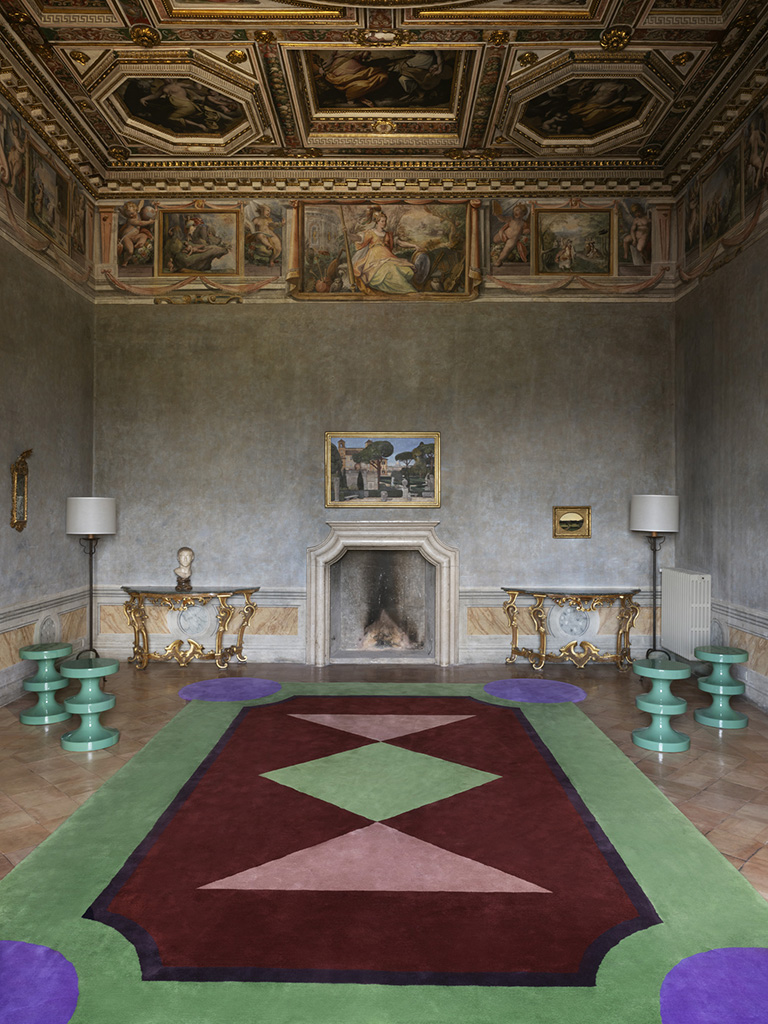
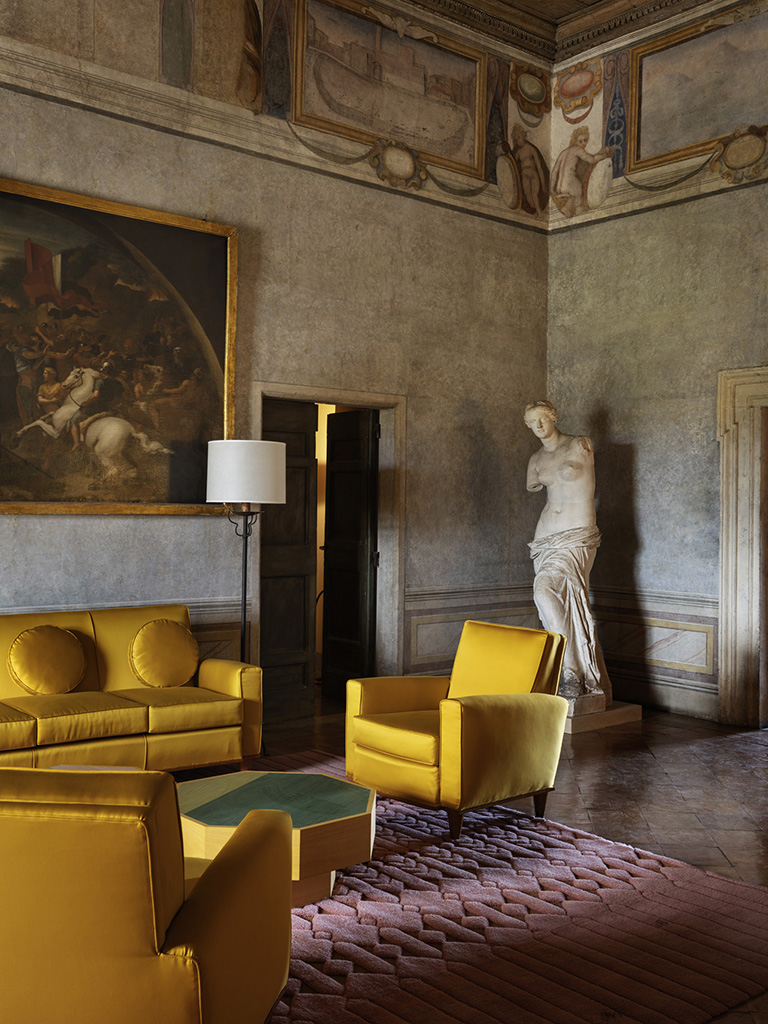
The result was the eponymous Villa Medici, a masterpiece of Renaissance architecture that became, under Medici’s leadership, a thrumming cultural nexus hosting the era’s greatest minds (Galileo stayed there multiple times), and a museum housing the art of Europe’s great masters.
Two centuries later, the Medici line had died out, and during the Napoleonic wars, the villa fell into the possession of Napoleon Bonaparte. Bonaparte had been looking for a permanent home in Rome for the French Academy, an institution created in the 17th century to patronise emerging French artists by sponsoring years-long residency programs in the Eternal City. Villa Medici proved the perfect fit and remains the home of the French Academy to this day.
Since then, the villa has undergone many restorations and renovations under the leadership of successive artistic directors, most memorably the French painter Balthus, who put the villa through painstaking renovations in the 1960s. “Balthus took on great responsibility for Villa Medici,” explains Pierre-Antoine Gatier, chief architect for French-owned historic monuments “He tried to restore the atmosphere of a great Roman palace. He restored the terracotta tiled floors, he decided to paint all the walls, cornices, and vaults in a very subtle palette of beige and ochre.”
In this way, the Villa Medici is less a historical monument and more a living, breathing organism, in an ever-evolving dialogue with the art of its time.
This is certainly the attitude of the French Academy’s current director, Sam Stourdzé, who was appointed by Emmanuel Macron in 2020 and has, since 2022, been unveiling his own renovations of the property through his “re-enchantment” program. “With Balthus and later Richard Peduzzi as creative directors, they took direct responsibility for the redesign,” Stourdzé explains. “We decided to take a more inclusive approach.” This new strategy is a three-step, multi-year project for which top creatives from Italy and France are commissioned to re-imagine the villa, room by room.
It started with Fendi. Kim Jones and Silvia Venturini Fendi—the brand’s artistic director of couture and womenswear, and artistic director of accessories and menswear, respectively—were tasked with refurbishing the villa’s six sprawling reception rooms. “The work required more than two years of research,” Stourdzé says. “[Jones and Fendi] delved into the history of Villa Medici to create a new setting, a new decoration.” The end result was unveiled last December, a remarkable re-imagining that blended modernism—bold pops of colour, contemporary artworks, metallic accents— with lovingly restored details from the villa’s history. Jones and Fendi commissioned custom handknotted carpets from recycled French wool to match the patinas painted by Balthus in the 1960s.
Paris-based designer Noé Duchaufour- Lawrence created tables for the Salon de Lecture and the Salon Bleu made of giant, interlocking slabs of marble intended to look like the cobblestones of Via Appia, the oldest road in Rome. In the Petit Salon, the hero piece is a large, curving orange-rust velvet sofa developed by Milan-based designer Toan Nguyen and produced by Fendi Casa, while fraternal design duo Ronan and Erwan Bouroullec created sculptural armchairs that sit in neat rows in the sprawling Grand Salon. These pieces complement the villa’s new selection of contemporary art, sourced from the Mobilier National, a French state service dedicated to the conservation and restoration of decorative arts. With a focus on women artists, the new salons feature pieces by Louise Bourgeois, Sheila Hicks, Aurelie Nemours, Sonia Delaunay and Alicia Penalba, alongside 17th-century tapestries that were lovingly restored by 1906-founded workshop Bobin Tradition. “We have this kind of dialogue between ancient statues and contemporary tapestries, contemporary furniture, and site-specific creations,” explains Hervé Lemoine, president of Mobilier National. “We mix styles and eras and combine them in a happy marriage.”
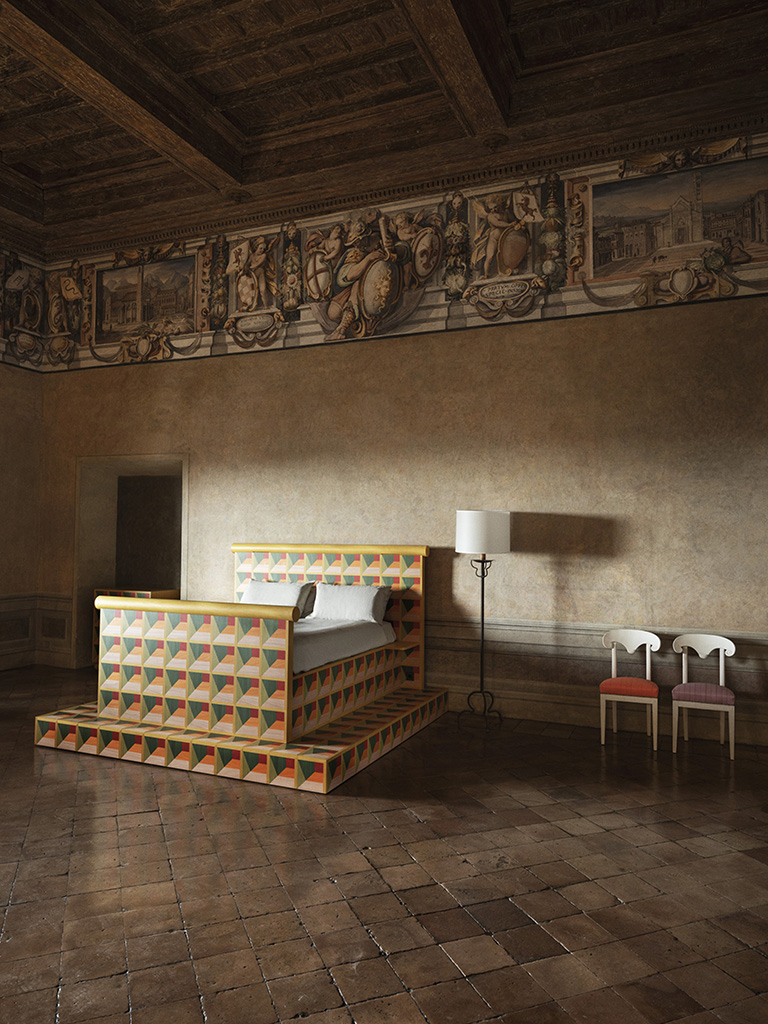
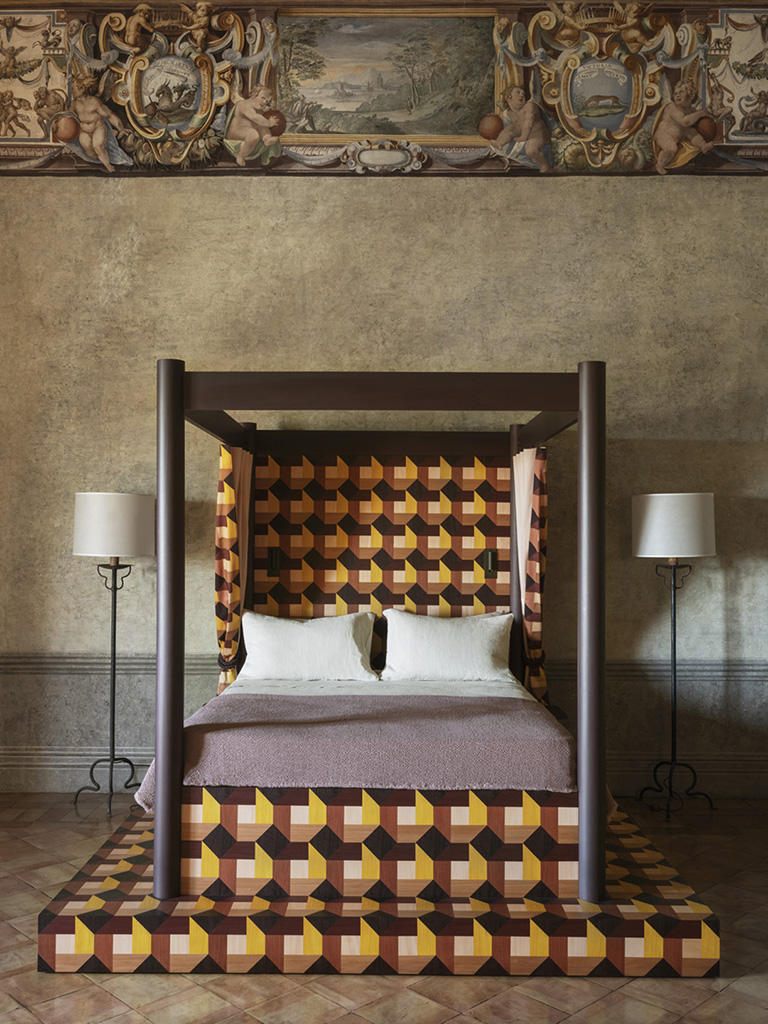
The second chapter in Stourdzè’s reenchantment project was unveiled in April this year: a collaboration with the buzzy Iranian-French architect and designer India Mahdavi. Mahdavi, whose past projects include London restaurant Sketch and the Monte Carlo Beach Club in Monaco, was commissioned for the art direction of six rooms in the villa, including the Cardinal Ferdinando de Medici’s original 16thcentury apartments, and three guest rooms named after iconic guests of the house: the Lili Boulanger Salon, the Debussy Room, and the Galileo Room. Mahdavi’s project centred around the concepts of geometry and colour, creating a look she later described as “pop Renaissance”.
“It was very humbling to think of intervening in Villa Medici,” Mahdavi says. “It was challenging to understand how to work without distorting the villa but joining its story. It’s a kind of magic being in these rooms.”
The importance was to “create the utmost comfort with the minimal number of items”, so Mahdavi kept the same walls and furniture that Balthus had installed in the 1960s. Her studio reworked furniture from the 17th and 18th centuries using an interlocking geometric motif in various bold colourways. A 16th-century fresco by the mannerist painter Jacopo Zucchi was restored as part of the project, and French artisan brand Maison Trèca was tapped to create handmade beds, all of which were designed in Paris.
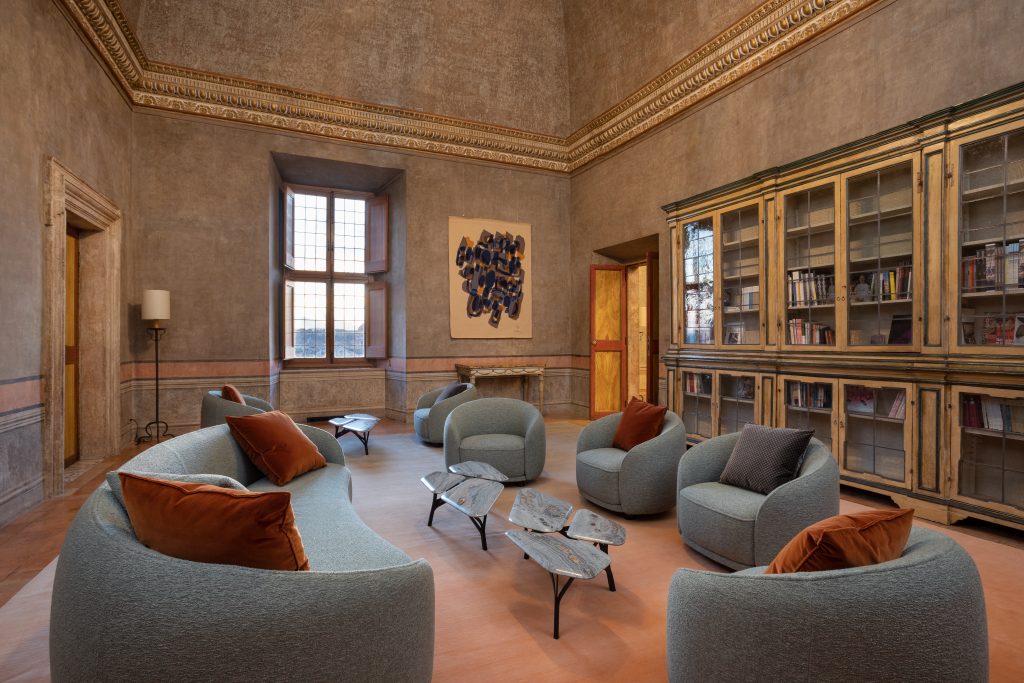
The final stage of the project is currently underway. The most collaborative of the three phases, stage three involved an open call to contemporary designers, architects and artists to pitch original concepts for how to transform the villa’s nine guest rooms. Judged by a jury overseen by Stourdzé, the process saw the first two guest rooms commissioned in early 2023. The first is a project called ‘Camera Fantasia’, by Gaëlle Gabillet and Stéphane Villard of Studio GGSV in Paris; Italian-born, New Yorkbased architect Riccardo Cavaciocchi of Paper Factor; and French artist Matthieu Lemariè,—who will transform the interior space of a room through the use of decorative paint and paper pulp. The second, ‘Studiolo’, is a project run by Sébastian Kieffer and Léa Padovani of Paris-based Studio Pool, together with Romain Boulais and Félix Lévêque of Atelier Veneer, which will focus on wooden cladding, monochrome colour, and intricate wall decorations. The remaining seven rooms will be unveiled over the coming year.
The villa is a popular location for tourists, thanks in part to its prime location, right next to the gardens of the Villa Borghese, but its primary function remains as a haven for artists. The Academy organises various residencies for Frenchspeaking artists, authors, and researchers throughout the year, offering recipients the chance to spend anywhere between a couple of months and several years immersed in the rich artistic history of both the villa itself and the city it overlooks. In this sense, Villa Medici’s raison d’etre is simple: it serves the art impulse. For Pierre-Antoine Gatier, this desire—to embolden a new generation of creative thinkers—has driven every element of the re-enchantment process. “There is a dialogue between the preservation of history and contemporary creation,” he says. “It was Balthus’ great dream that his intervention would benefit creation—by the residents who were there then, and now by us, 30, 40 or even 50 years later.”
Room reservations are requested at least two months in advance.
